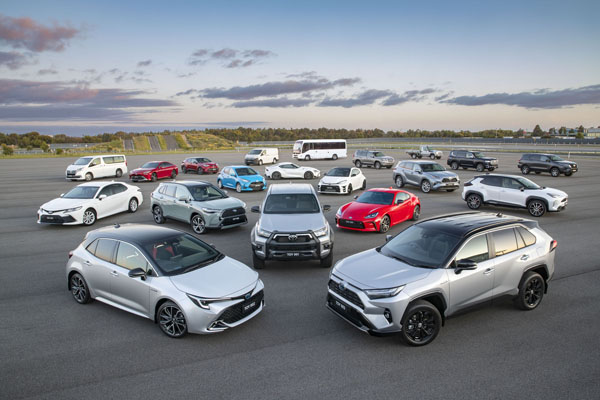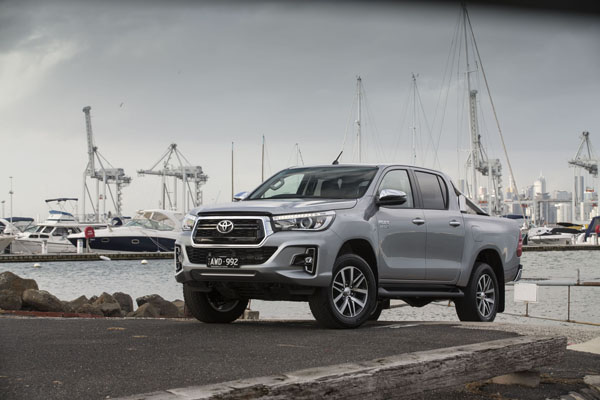
The 2022 Toyota range
The Federal Chamber Of Automotive Industries (FCAI) has released the final Australian
motor vehicle sales figures for 2022.
Despite demand exceeding supply as a result of the usual suspects, COVID-19 and the
war in Ukraine, the Australian automotive market still recorded sales of 1,081,429 new
vehicles – an increase of 3% over 2021 sales.
For the 20th straight year Toyota was Australia’s top selling car brand with 231,050 units,
an increase of 3.3%. Although Mazda sales declined by 5.3% it remained in clear second
place with 95,718 sales, with Kia finishing third (its highest-ever position) with an increase
of 15.3% and overtaking Korean sibling Hyundai (5th) for the first time.
MG (7th) continued to grow strongly with an increase of 27% over 2021 sales while Isuzu
UTE (9th) made the top ten for the first time.
SUVs and light commercials accounted for 76.8 per cent of sales and comprised eight of
the top 10 vehicles with only Toyota Corolla (6th) and Hyundai i30 (10th) preventing a
clean-sweep.

Toyota HiLux is Australia’s biggest-selling vehicle for the 7th straight
year
For the seventh straight year the top-selling Australian vehicle was Toyota Hi-Lux with
64,391 sales, well ahead of Ford Ranger (47,479) and RAV4 (34,845).
Battery electric vehicles accounted for 3.1 per cent of total sales with a total of 33,410
units, well up on the 5,149 in 2021. Add 81,786 Hybrids and 5,937 Plug-In Hybrids (PHEV)
and the future is clear.

MZ ZS EV is part of the steady growth in electric vehicles in Australia
FCAI Chief Executive Tony Weber said the pathway through COVID recovery,
microprocessor shortages and bottlenecks due to global shipping issues had created great
challenges for car makers and their dealer networks in 2022.
“While 2022 has been a year of resilience and recovery, 2023 is shaping up as one of the
most significant in recent history, particularly in terms of the development of policies that
set the direction for the future decarbonisation of the light vehicle fleet.











